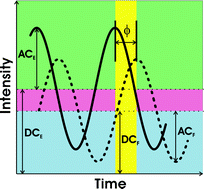Time-resolved methods in biophysics. 8. Frequency domain fluorometry: applications to intrinsic protein fluorescence†
Abstract

- This article is part of the themed collection: Time-resolved methods in biophysics series
* Corresponding authors
a
Department of Cell and Molecular Biology, John A. Burns School of Medicine, University of Hawaii at Manoa, 651 Ilalo St., BSB 222, Honolulu, Hawaii
E-mail:
djameson@hawaii.edu

 Please wait while we load your content...
Something went wrong. Try again?
Please wait while we load your content...
Something went wrong. Try again?
J. A. Ross and D. M. Jameson, Photochem. Photobiol. Sci., 2008, 7, 1301 DOI: 10.1039/B804450N
To request permission to reproduce material from this article, please go to the Copyright Clearance Center request page.
If you are an author contributing to an RSC publication, you do not need to request permission provided correct acknowledgement is given.
If you are the author of this article, you do not need to request permission to reproduce figures and diagrams provided correct acknowledgement is given. If you want to reproduce the whole article in a third-party publication (excluding your thesis/dissertation for which permission is not required) please go to the Copyright Clearance Center request page.
Read more about how to correctly acknowledge RSC content.
 Fetching data from CrossRef.
Fetching data from CrossRef.
This may take some time to load.
Loading related content
